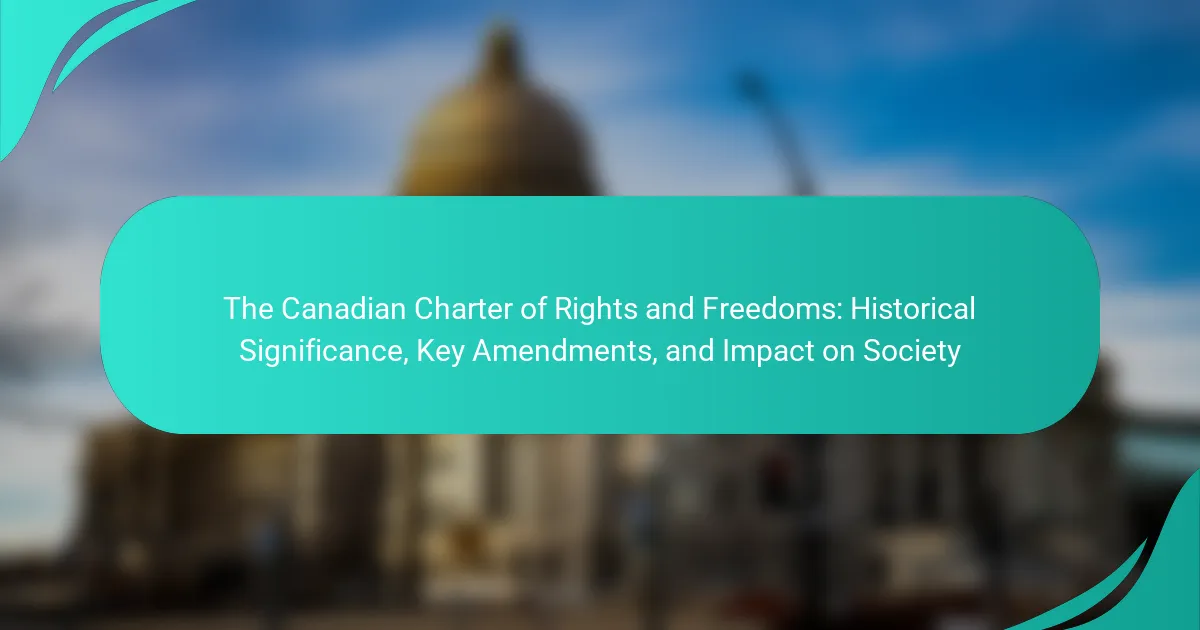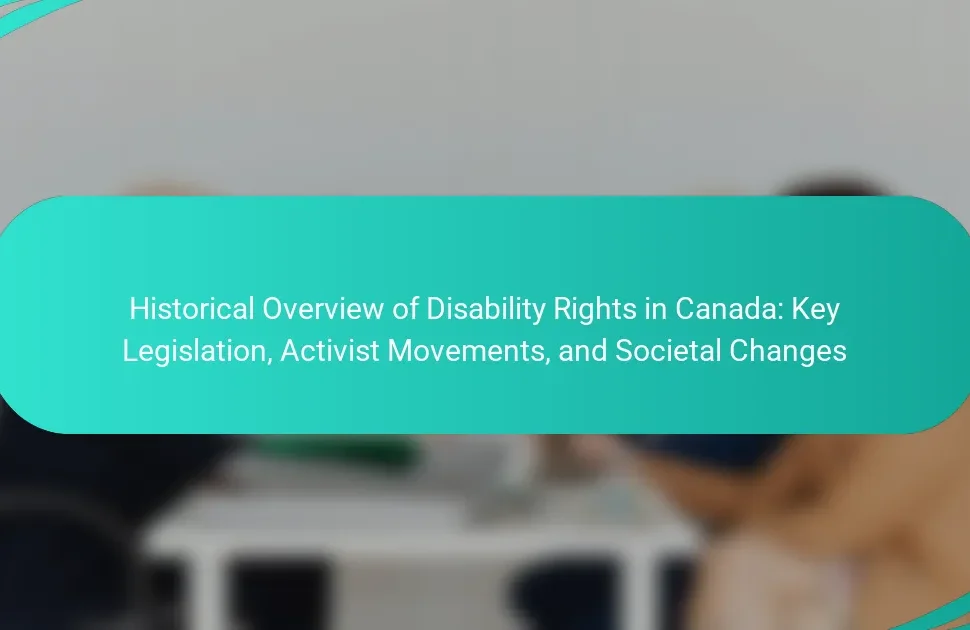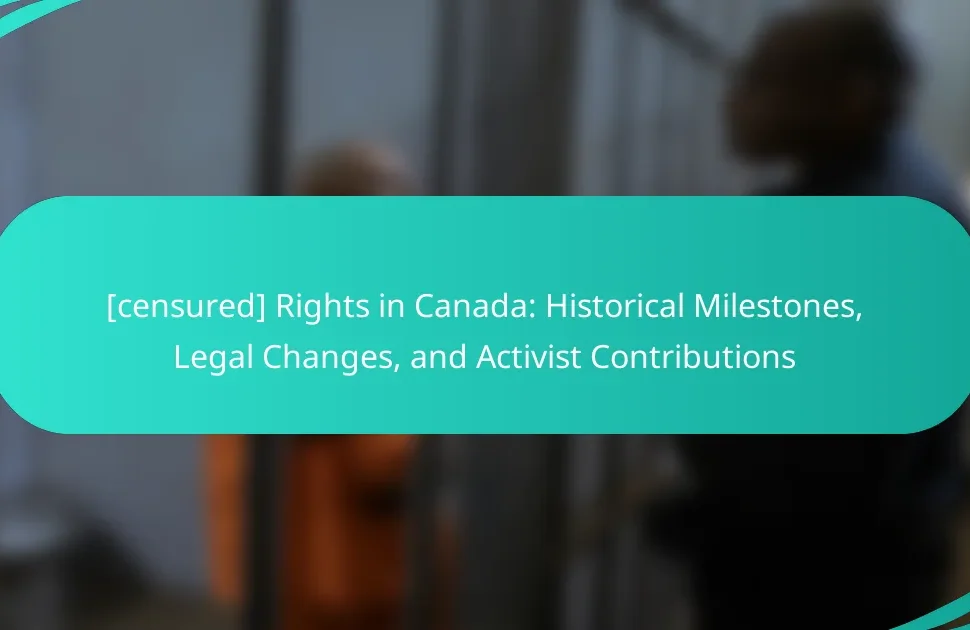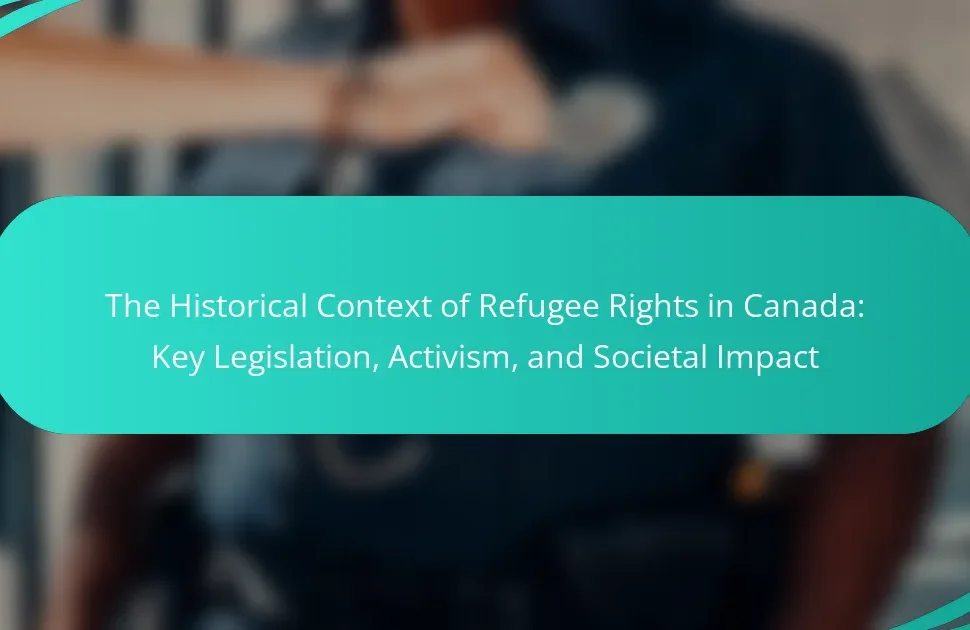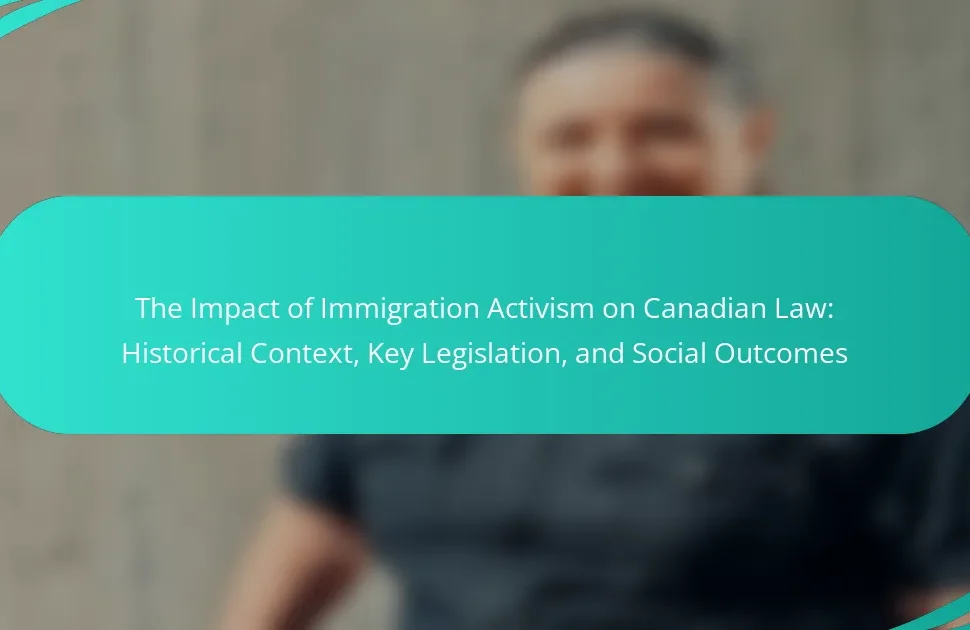
What is the Canadian Charter of Rights and Freedoms?
The Canadian Charter of Rights and Freedoms is a constitutional document that outlines the rights and freedoms of Canadian citizens. It was enacted in 1982 as part of the Canada Act. The Charter guarantees fundamental freedoms such as freedom of expression, assembly, and religion. It also protects legal rights, equality rights, and language rights. The Charter applies to all levels of government in Canada. It has played a significant role in shaping Canadian law and society. Courts often reference the Charter in legal decisions to uphold citizens’ rights. The Charter reflects Canada’s commitment to democracy and human rights.
How was the Canadian Charter of Rights and Freedoms created?
The Canadian Charter of Rights and Freedoms was created through the patriation of the Constitution in 1982. This process involved negotiations between the federal government and provinces. Prime Minister Pierre Trudeau played a crucial role in advocating for the Charter. The Charter was introduced as part of the Constitution Act, 1982. It aimed to protect individual rights and freedoms in Canada. The Charter includes fundamental freedoms, legal rights, and equality rights. It was designed to ensure that all Canadians are treated fairly under the law. The Charter has since become a cornerstone of Canadian law and society.
What historical events led to the development of the Charter?
The Canadian Charter of Rights and Freedoms was developed in response to several historical events. The 1960 Canadian Bill of Rights was a precursor, establishing a foundation for individual rights. The 1970s saw growing demands for constitutional reform, particularly from Indigenous groups and minority communities. The patriation of the Constitution in 1982 was a pivotal moment, allowing Canada to amend its own constitution. The inclusion of the Charter aimed to unify diverse Canadian society under common rights. The desire for legal protection of rights emerged from past injustices and discrimination. These events culminated in the Charter’s adoption, which has since shaped Canadian law and society.
Who were the key figures involved in its creation?
The key figures involved in the creation of the Canadian Charter of Rights and Freedoms include Pierre Elliott Trudeau, Jean Chrétien, and the members of the Constitutional Conference. Pierre Elliott Trudeau was the Prime Minister of Canada and a driving force behind the Charter’s development. Jean Chrétien served as the Minister of Justice and played a crucial role in drafting the document. The Constitutional Conference, which included representatives from federal and provincial governments, collaborated to finalize the Charter. Their collective efforts resulted in the Charter being enacted on April 17, 1982, as part of the Constitution Act.
Why is the Canadian Charter of Rights and Freedoms significant?
The Canadian Charter of Rights and Freedoms is significant because it enshrines fundamental rights and freedoms for all Canadians. It was enacted in 1982 as part of the Constitution Act. The Charter guarantees rights such as freedom of expression, freedom of assembly, and the right to a fair trial. It also protects against discrimination based on race, gender, and disability. The Charter serves as a legal framework for challenging laws that infringe on these rights. Courts use the Charter to interpret legislation and protect individual liberties. Its adoption marked a shift towards a more rights-based approach in Canadian law. The Charter has profoundly influenced Canadian society and governance.
What fundamental rights and freedoms does the Charter protect?
The Canadian Charter of Rights and Freedoms protects fundamental rights and freedoms including freedom of expression, freedom of assembly, and the right to a fair trial. These rights ensure individuals can express their opinions without government interference. Freedom of assembly allows people to gather peacefully for protests or meetings. The right to a fair trial guarantees that individuals receive a legal process that is impartial and just. Additionally, the Charter protects rights related to equality, such as freedom from discrimination based on race, gender, or disability. These protections are crucial for upholding democratic values in Canada. The Charter was enacted in 1982 and serves as a cornerstone of Canadian law.
How does the Charter influence Canadian society and law?
The Canadian Charter of Rights and Freedoms significantly influences Canadian society and law by establishing fundamental rights and freedoms for all citizens. It protects civil liberties such as freedom of expression, assembly, and religion. The Charter ensures that laws and government actions comply with these rights. Courts interpret and apply the Charter in legal cases, shaping Canadian jurisprudence. Landmark cases, like R v. Morgentaler, demonstrate the Charter’s impact on reproductive rights. The Charter also promotes equality by prohibiting discrimination based on race, gender, and [censured] orientation. It fosters a culture of respect for human rights within Canadian society. Overall, the Charter acts as a cornerstone of democracy in Canada.
What are the core principles of the Canadian Charter of Rights and Freedoms?
The core principles of the Canadian Charter of Rights and Freedoms include fundamental freedoms, democratic rights, mobility rights, legal rights, equality rights, and language rights. Fundamental freedoms protect freedoms of expression, assembly, and religion. Democratic rights ensure the right to vote and run for office. Mobility rights allow citizens to move and reside anywhere in Canada. Legal rights guarantee fair trial rights and protection against arbitrary detention. Equality rights prohibit discrimination based on characteristics like race and gender. Language rights provide the right to use English or French in government. These principles form the foundation of Canadian democracy and uphold individual rights.
How do these principles relate to individual rights?
The principles of the Canadian Charter of Rights and Freedoms directly uphold individual rights. They establish fundamental freedoms, legal rights, and equality rights for all Canadians. These principles ensure protection against discrimination based on race, gender, or religion. They also guarantee freedoms such as expression, assembly, and association. The Charter serves as a legal framework that individuals can invoke in court. It has been pivotal in landmark cases that shaped Canadian society. For instance, the Supreme Court of Canada has utilized the Charter to protect minority rights. This demonstrates the Charter’s role in reinforcing individual rights within the legal system.
What role does the Charter play in promoting equality?
The Canadian Charter of Rights and Freedoms plays a crucial role in promoting equality by establishing fundamental rights for all individuals. It guarantees equal protection and equal benefit of the law without discrimination based on race, gender, age, or other characteristics. This legal framework empowers individuals to challenge discriminatory practices in courts. Section 15 of the Charter specifically addresses equality rights, ensuring that every person is treated equally under the law. Historical cases, such as Andrews v. Law Society of British Columbia, demonstrate the Charter’s effectiveness in advancing equality. The Charter has led to significant legal precedents that reinforce the principle of equality in Canadian society.
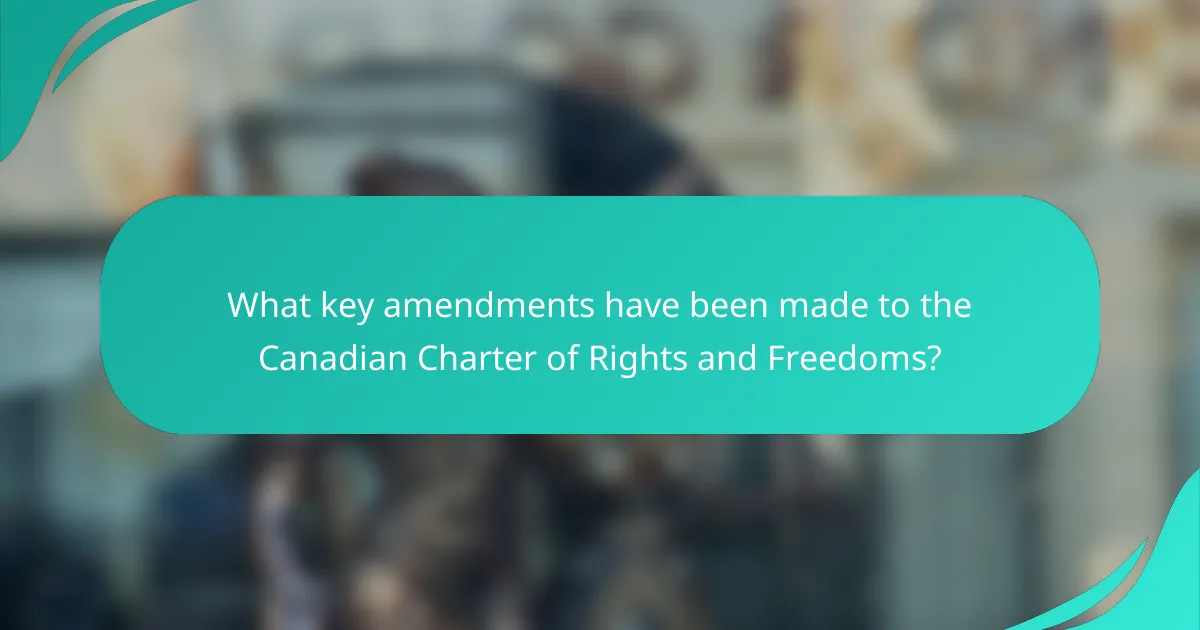
What key amendments have been made to the Canadian Charter of Rights and Freedoms?
The Canadian Charter of Rights and Freedoms has not undergone any formal amendments since its enactment in 1982. However, its interpretation has evolved through numerous Supreme Court rulings. These rulings have expanded the understanding of rights such as equality and freedom of expression. For example, the Supreme Court’s 1995 decision in R v. Morgentaler significantly impacted reproductive rights. Additionally, the 2005 ruling in Halpern v. Canada addressed same-[censured] marriage rights. These interpretations serve as key developments in the application of the Charter.
What are the most notable amendments to the Charter?
The Canadian Charter of Rights and Freedoms has not undergone formal amendments since its enactment in 1982. However, significant interpretations and applications have evolved through Supreme Court rulings. Notable cases include R v. Oakes, which established the Oakes test for reasonable limits on rights. Another important case is R v. Morgentaler, which impacted reproductive rights. The Charter has also influenced legislation, such as the legalization of same-[censured] marriage through judicial interpretation. These developments highlight the Charter’s dynamic role in shaping Canadian rights and freedoms.
How have these amendments changed the interpretation of rights?
The amendments to the Canadian Charter of Rights and Freedoms have significantly changed the interpretation of rights. They have expanded the scope of individual rights and freedoms. For example, the inclusion of Section 15, which addresses equality rights, has led to broader interpretations of discrimination. Courts have applied this section to various contexts, including race, gender, and [censured] orientation. Additionally, amendments have prompted judicial activism, allowing courts to interpret rights in light of contemporary societal values. This has resulted in landmark rulings that have reshaped the legal landscape. The amendments have thus made rights more inclusive and adaptable to changing societal norms.
What impact have these amendments had on marginalized groups?
The amendments to the Canadian Charter of Rights and Freedoms have significantly improved the rights of marginalized groups. They have provided legal protections against discrimination based on race, gender, and disability. For instance, Section 15 guarantees equality rights, which has been instrumental in advancing social justice. Legal cases, such as Andrews v. Law Society of British Columbia, have set precedents for recognizing the rights of immigrants and minorities. Additionally, these amendments have fostered greater representation and participation of marginalized communities in political processes. Statistics show increased access to services and resources for these groups since the Charter’s implementation. Overall, the amendments have played a crucial role in promoting equity and inclusion in Canadian society.
Why are amendments to the Canadian Charter of Rights and Freedoms important?
Amendments to the Canadian Charter of Rights and Freedoms are important because they ensure the protection and evolution of individual rights. The Charter, enacted in 1982, was designed to safeguard fundamental freedoms. However, society’s values and needs change over time. Amendments allow the Charter to adapt to these changes. For example, the addition of protections for language rights reflects Canada’s multicultural identity. Furthermore, amendments can address gaps in rights protection that may emerge. This adaptability strengthens the rule of law and promotes justice. Overall, amendments maintain the Charter’s relevance and effectiveness in protecting citizens’ rights.
How do amendments reflect societal changes and values?
Amendments reflect societal changes and values by formalizing shifts in public opinion and legal standards. They often address emerging social issues and rights that gain prominence over time. For example, the amendment to include gender equality in the Charter reflects the growing recognition of women’s rights in Canadian society. Similarly, the recognition of Indigenous rights through amendments highlights the increasing awareness and respect for Indigenous cultures and issues. Historical instances, such as the patriation of the Constitution in 1982, illustrate how amendments can signify a collective desire for self-determination and national identity. These changes in the law demonstrate a responsiveness to evolving societal norms and values, ensuring that legal frameworks align with contemporary beliefs and practices.
What challenges arise during the amendment process?
The amendment process of the Canadian Charter of Rights and Freedoms faces several challenges. One challenge is achieving consensus among provinces and the federal government. This is often complicated by differing political priorities and regional interests. Another challenge is the potential for public backlash against proposed changes. Public opinion can significantly influence the political landscape. Additionally, the complex legal framework can create obstacles. Legal interpretations of rights may lead to disputes over the necessity or implications of amendments. These challenges can delay or derail the amendment process. Historical examples, such as the failed Meech Lake Accord, illustrate the difficulties in achieving constitutional amendments in Canada.

What impact has the Canadian Charter of Rights and Freedoms had on society?
The Canadian Charter of Rights and Freedoms has profoundly impacted society by protecting individual rights and freedoms. It was enacted in 1982 as part of the Constitution Act. The Charter guarantees fundamental freedoms such as freedom of expression, assembly, and religion. It also ensures legal rights, including the right to a fair trial and protection against unreasonable search and seizure.
The Charter has led to significant legal reforms and court decisions that uphold these rights. For instance, the Supreme Court of Canada has used the Charter to strike down laws that infringe on individual liberties. The Charter has also influenced public policy and societal norms, fostering a culture of rights awareness.
Surveys indicate that Canadians increasingly recognize the importance of the Charter in everyday life. Overall, the Canadian Charter of Rights and Freedoms has shaped a more equitable and just society.
How has the Charter shaped Canadian law and governance?
The Canadian Charter of Rights and Freedoms has significantly shaped Canadian law and governance. It establishes fundamental rights and freedoms that protect individuals from government actions. The Charter ensures equality before the law, freedom of expression, and the right to a fair trial. It has influenced judicial decisions, leading to landmark rulings that reinforce civil liberties. For example, the Supreme Court of Canada has used the Charter to strike down laws that infringe on rights. The Charter also mandates that all levels of government comply with its provisions. This has led to greater accountability and transparency in governance. Overall, the Charter has become a cornerstone of Canadian democracy and legal framework.
What landmark court cases have been influenced by the Charter?
Landmark court cases influenced by the Charter include R v. Oakes, R v. Morgentaler, and R v. Butler. R v. Oakes established the Oakes test for justifying limits on rights. This case addressed the presumption of innocence and the burden of proof. R v. Morgentaler struck down abortion laws, affirming women’s rights to choose. This case emphasized the right to security of the person. R v. Butler dealt with obscenity laws, highlighting freedom of expression. These cases demonstrate the Charter’s significant impact on Canadian law and individual rights.
How does the Charter affect government policies and practices?
The Canadian Charter of Rights and Freedoms significantly influences government policies and practices. It establishes fundamental rights and freedoms that the government must respect. This legal framework guides legislative processes and administrative actions. For instance, policies must align with the Charter’s provisions on freedom of expression and equality rights. Courts interpret and enforce these rights, ensuring compliance. Landmark cases, such as R v. Oakes, illustrate how the Charter shapes judicial review of legislation. The Charter also mandates that governments consider human rights in policy development. Overall, it serves as a cornerstone for protecting citizens’ rights in Canada.
What role does public awareness play in the effectiveness of the Charter?
Public awareness significantly enhances the effectiveness of the Charter. Increased awareness informs citizens of their rights and freedoms. It encourages individuals to advocate for their rights. When the public is knowledgeable, they are more likely to engage with legal processes. This engagement can lead to greater accountability from government institutions. Surveys indicate that informed citizens are more likely to utilize legal protections provided by the Charter. For example, a study by the Canadian Bar Association found that public knowledge of the Charter correlates with higher rates of legal action taken by individuals. Ultimately, public awareness serves as a catalyst for the Charter’s intended impact on society.
How can citizens engage with and advocate for their rights under the Charter?
Citizens can engage with and advocate for their rights under the Charter by understanding their rights and participating in civic activities. They can educate themselves on the specific rights afforded by the Canadian Charter of Rights and Freedoms. Citizens should attend community meetings and workshops that focus on Charter rights. They can also join advocacy groups that work to promote and protect these rights. Writing to elected representatives about concerns related to Charter rights is another effective method of engagement. Citizens can participate in peaceful protests and demonstrations to raise awareness of their rights. Additionally, leveraging social media platforms can amplify their voices and mobilize support. Engaging with legal professionals for guidance on Charter issues can further empower citizens. These actions contribute to a more informed and active citizenry, enhancing the protection and promotion of rights under the Charter.
What are some common misconceptions about the Canadian Charter of Rights and Freedoms?
One common misconception about the Canadian Charter of Rights and Freedoms is that it guarantees absolute rights. In reality, the Charter allows for reasonable limits on rights and freedoms under Section 1. Another misconception is that the Charter applies to all organizations, including private entities. However, it primarily governs public institutions and government actions. Some people believe the Charter only protects civil liberties, but it also encompasses economic and social rights. Additionally, many think the Charter was enacted in 1867, while it actually came into force in 1982. Lastly, there is a belief that the Charter is inflexible and cannot be amended. In fact, it can be modified through constitutional amendments as outlined in Part V of the Constitution Act, 1982.
How can understanding these misconceptions improve public discourse?
Understanding misconceptions about the Canadian Charter of Rights and Freedoms can significantly enhance public discourse. Recognizing these misconceptions allows individuals to engage in informed discussions. This knowledge fosters clarity regarding rights and responsibilities under the Charter. It also helps dispel myths that may polarize public opinion. For instance, a common misconception is that the Charter only protects individual rights. In reality, it also emphasizes collective rights. Addressing such misunderstandings can lead to more constructive debates. Furthermore, informed citizens are better equipped to advocate for their rights and the rights of others. This ultimately strengthens democratic processes and societal cohesion.
What best practices can individuals follow to uphold their rights under the Charter?
Individuals can uphold their rights under the Charter by being informed about their rights and responsibilities. Understanding the specific rights guaranteed by the Canadian Charter of Rights and Freedoms is essential. Individuals should actively engage in discussions about these rights within their communities. They can also participate in civic activities, such as voting and attending public forums. Documenting any violations of rights is crucial for accountability. Seeking legal advice when rights are infringed can help in addressing issues effectively. Advocacy for policy changes can also promote broader awareness and protection of rights. Education on the Charter’s significance can empower individuals to assert their rights confidently.
The Canadian Charter of Rights and Freedoms is a constitutional document enacted in 1982 that outlines the fundamental rights and freedoms of Canadian citizens, including legal, equality, and language rights. The article explores the Charter’s historical significance, its creation through the patriation of the Constitution, and the key figures involved, such as Prime Minister Pierre Trudeau. It also discusses the Charter’s impact on Canadian law and society, landmark court cases influenced by its provisions, and the importance of public awareness in advocating for rights. Additionally, the article addresses common misconceptions about the Charter and best practices for individuals to uphold their rights.
